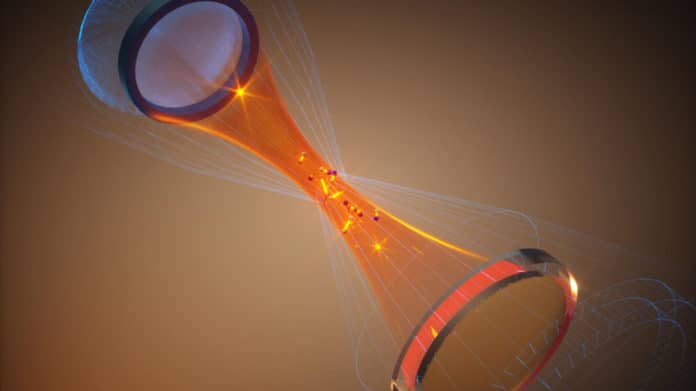Quantum physics is the base of an era of technologies. But to achieve that, physicists need to master the ability to make light interact with matter – or, more technically, photons with atoms. This ability has been achieved to some extent, offering the cutting-edge field of cavity quantum electrodynamics (QED).
Quantum electrodynamics (QED) is already used in quantum networks and quantum information processing. Although, there is still a long way to go.
Existing light-matter interactions are limited to individual atoms. This limits the ability to analyze light-matter interactions are limited to individual atoms.
Physicists at EPFL have found a way to get photons to interact with pairs of atoms for the first time. They discovered a way to get photons to ‘mix’ with pairs of atoms at ultra-low temperatures. The breakthrough is important for the field of cavity quantum electrodynamics (QED).
Physicists used Fermi gas, a state of matter made of atoms resembling electrons in materials.
Jean-Philippe Brantut at EPFL’s School of Basic Sciences said, “In the absence of photons, the gas can be prepared in a state where atoms interact very strongly with each other, forming loosely bound pairs. As light is sent onto the gas, some of these pairs can be turned into chemically bound molecules by absorbing with photons.”
“A key concept in this new effect is that that it happens ‘coherently,’ which means that photon can be absorbed to turn a pair of atoms into a molecule, then emitted back, then reabsorbed multiple times.”
“This implies the pair-photon system forms a new type of ‘particle’ – technically an excitation – which we call ‘pair-polariton.’ This is made possible in our system, where photons are confined in an ‘optical cavity’ – a closed box that forces them to interact strongly with the atoms.”
The hybrid pair-polaritons capture some properties of photons. Meanwhile, optical methods can capture them. They also take some of the properties of the Fermi gas, like the number of atom pairs it had originally before the incoming photons.
Brant said, “Some of the very intricate properties of the gas are translated onto optical properties, which can be measured directly, and even without perturbing the system. A future application would be in quantum chemistry since we demonstrate that some chemical reactions can be coherently produced using single photons.”
Journal Reference:
- Hideki Konishi, Kevin Roux et al. Universal pair-polaritons in a strongly interacting Fermi gas. Nature 25 August 2021. DOI: 10.1038/s41586-021-03731-9
